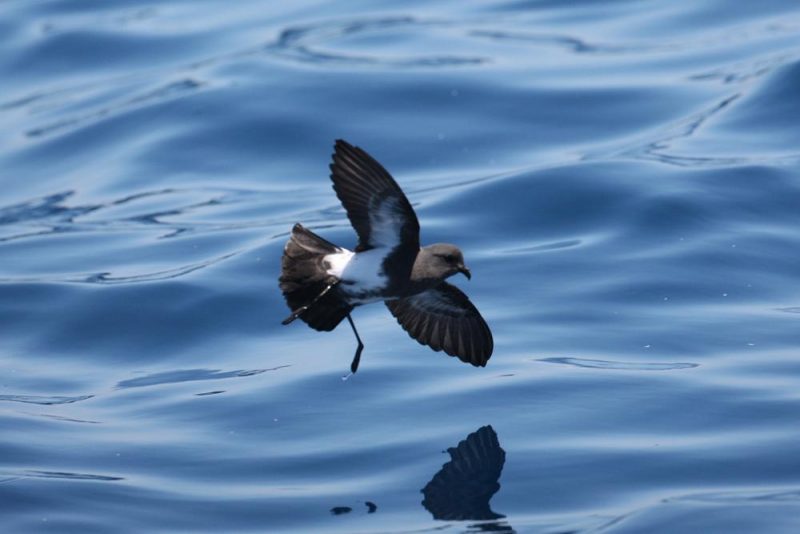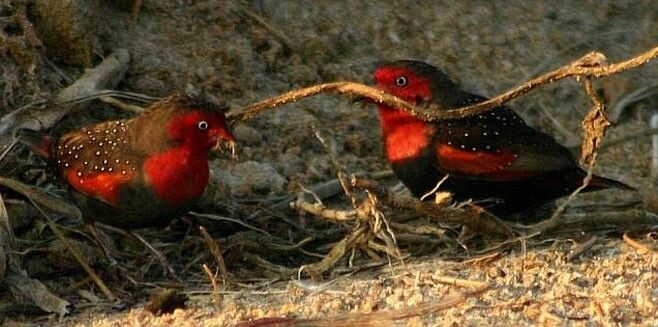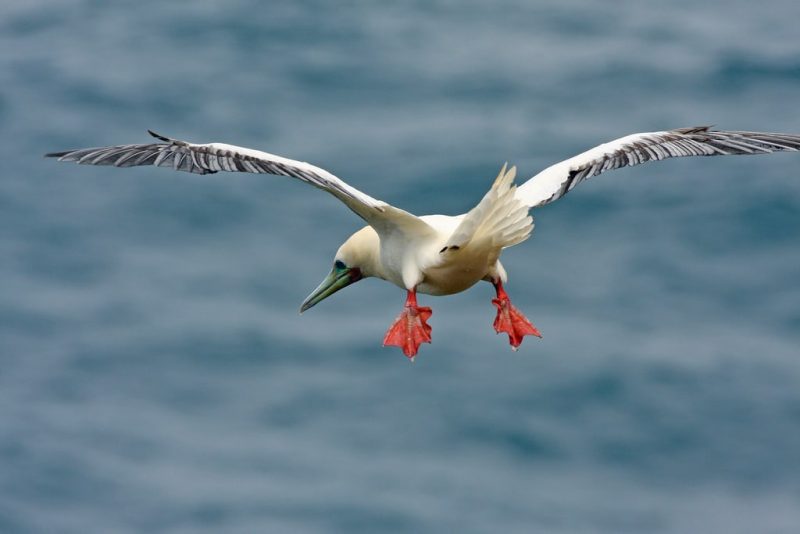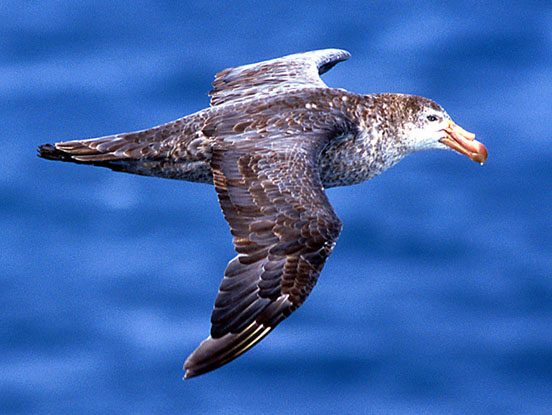Storm-petrels, Bee-eaters, Waxbills and Kenyan twitters
Serious birders, while wandering around the vast outdoors of Kenya, have encountered some birds that have been lost and forgotten for the longest time. These nature lovers described the birds in great detail and have created accounts for subsequent research. Such birds are the Storm-petrels, the Bee-eaters, the Waxbills, and other such sundry rare birds.
Storm-petrels
Apart from shearwaters, the order Procellariiformes also consists of storm-petrels which are the smallest seabirds in the world. They feed on tiny fishes picked from the surface and planktonic crustaceans, typically while hovering. They are the Black-bellied storm-petrel and the Leach’s storm-petrel.
Black-bellied storm-petrel
On the 27th of June 1988, biologists found a fresh carcass of a Black-bellied storm-petrel on Watamu beach representing the first Kenyan record for this species. It had lost its left leg but was otherwise entire. It was not a juvenile owing to wing feather condition and age. The bird was identified quickly because of its distinctive plumage. The main feature distinguishing this species is a black stripe from its dark chest to the under-tail coverts. Later on, in 1994 another one was found dead in Malindi.
Leach’s Storm-Petrel
Dark plumage contrasting the pale upper wing bar and rump patch with a forked tail are the main characteristics of a Leach’s storm petrel. During the nonbreeding season, this bird is primarily pelagic, and are only being found inshore during storms. They feed on crustacean, small fish, and invertebrates. It sometimes follows cetaceans while foraging. It is a rare Kenyan bird, and a beached specimen was found dead south of Mombasa in 1967, and there are further records of three sightings in April, October and December of the same year in Kilifi, Watamu, and Mtwapa.
Bee-eaters
The near passerine birds belonging to the Meropidae family are called the bee-eaters. Most of them are African species out of which some are from Kenya. They have colored plumage, elongated central tail feathers, and slender bodies. All have pointed wings and down-turned bills and appear like swallows when seen from afar. They are the Swallow-tailed bee-eater, and the Southern Carmine bee-eater.
Swallow-Tailed Bee-Eater
Preferring Eucalyptus plantation and tall savanna woodlands, the Swallow-tailed bee-eater’s diet consists primarily of insects, especially bees. It locates its prey from low perches. Once they find the victim, it rapidly flies at the insect and kills it by repeated banging. If it is poisonous, they rub the sting against a hard surface until they secrete all the venom. Both sexes excavate the nest, which they usually dig into riverbanks or sandbanks. The chicks are fed butterflies, wasps and bees by both parents. There are unverified, old reports of specimens from Shimba and Vanga Hills.
Southern Carmine Bee-Eater
By painting the sky with a blur of color using their fabulous feathers, the Southern carmine bee-eaters announce their arrival by Mid-August. Up to a thousand of them can congregate and they make a spectacular sight. They migrate for breeding purposes and stay for three months. Like heat-seeking missiles, they swirl and swoop through the air. The act of catching bees in mid-flight is a sight to be reckoned.
Sundry rare birds
An account of the precious birds of Kenya is incomplete without an account of the most extraordinary of the unique birds. They are the Southern gray shrike, Jackson’s pipit, the Ortolan bunting, the Orange Weaver, and the Broad-tailed paradise-whydah.
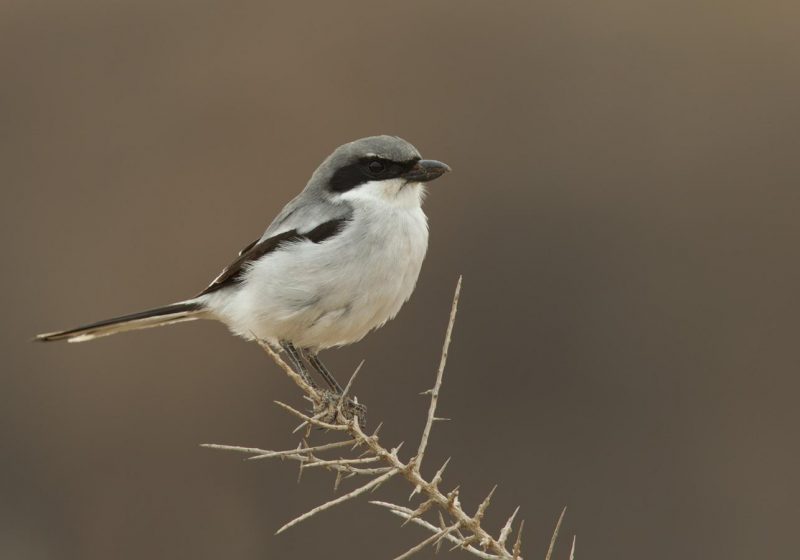
Storm-petrels Bee-eaters Waxbills Source: HBW
Southern Grey Shrike
While being perched on an exposed and prominent tree, the Southern gray shrike moves its tail up and down. When it finds its prey on the ground, it dashes to the victim. The eye patch of these birds is extensive, in sharp contrast with white cheeks. Southern gray shrikes are resident birds, with only some short distance movements. It is an accidental bird in Kenya.
Jackson’s Pipit
Unlike many African pipits, the head and back of Jackson’s pipit is the same color, marked with white bands. Also, the underparts differ in being buff instead of white. The outer tail feathers are white, and many of the feathers have buff edges. The Jackson’s pipit’s bill is dark with a pink mandible and has a white eyebrow that curves behind the cheek. A dark stripe separates this latter from the throat.
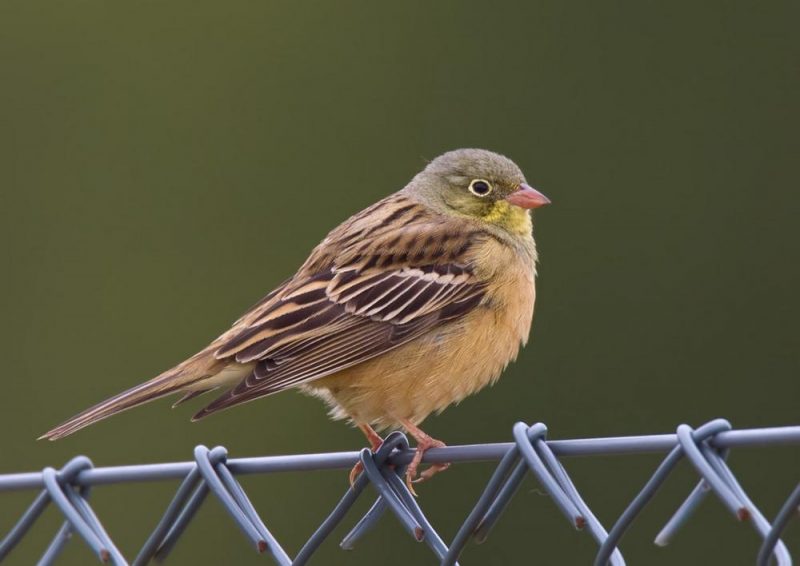
Ortolan bunting Source: HBW
Ortolan Bunting
The appearance of an Ortolan bunting is rather beautiful and impressive with its upper parts greyish brown, a distinctive yellow eye ring around the brown iris, brownish pink legs, and a pink beak with a black tip. They build their nests on the ground using long dry grass and line them with hair.
Orange Weaver
Some biologists consider Orange weavers its species. It is also called the Northern red bishop. They are long-lived and robust. They are also prone to obesity. The cocks seasonally enter a colorful black-and-orange plumage and the feathers around the neck fluff outward. The hen is smaller and has darker streaking on the underparts and cheeks. The species is polygamous. They become aggressive when they come into nuptial plumage. When not breeding, they tend to become pests to crops. Orange weavers should be given regular bathing opportunities as they love to bathe.
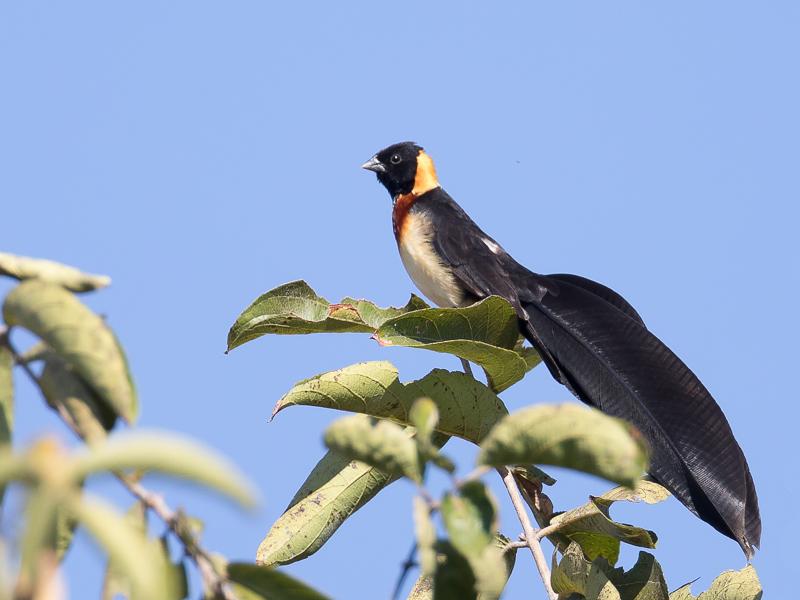
Broad tailed paradise whydah Source: HBW
Broad-Tailed Paradise-Whydah
Each whydah species tends to mimic its host’s song, interspersing its innate motifs, to attract hens. These birds do not build their nests. They lay their eggs in others’ nests. A single female whydah lays around 22 eggs in a season. It does not remove the eggs of the hosts. In fact, fledging data suggests that this behavior does little damage to the productivity of the host. Although the baby whydahs mimic the host species to avoid detection, some differences are noted. The host then raises the chicks alongside their own. Whydahs are thought to mimic the vocalizations of their parents via imprinting.
Most of the accounts on birds are shallow descriptions such as their identification features, behavior and ecology. Much research is needed to study and understand these birds in detail.
5 Frequently Asked Questions About Serious birders in Kenya
To receive a colourful digibook about birds with videos, images and text, please fill out the following form or simply email us on safaris@safari-center.com

